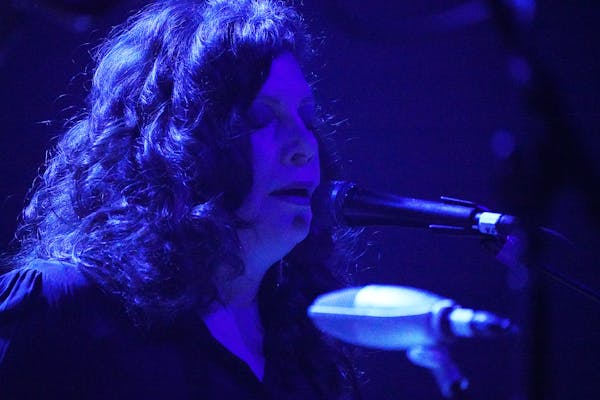There never really was a lead vocalist in Low. The star of the Duluth band was always the combined sound and nerve-piercing effect of drummer Mimi Parker and her guitarist Alan Sparhawk singing together.
Like the weather on the big lake outside their home in Duluth, the couple's combined vocals could go from being stunningly serene and gentle to gale-force tempestuousness over the course of an album or even just one song. In some cases, though — including several of Low's best-loved tracks — Parker did take a lead role on vocals.
Here are the finest examples of when that happened, following Parker's death at 55 on Saturday from ovarian cancer. Her funeral is scheduled Thursday at 1 p.m. at Duluth's Church of Jesus Christ of Latter-day Saints, 521 Upham. Her music will live on.
"Just Like Christmas" (1999) — The opening track on the trio's cult-loved "Christmas" record set the hallowed and heartfelt tone that contrasted so many other holiday albums of Low's era and ilk.
"Laser Beam" (2001) — A stunning mid-album show-stopper on the trio's first thoroughly great record, "Things We Lost in the Fire," recorded with Nirvana producer Steve Albini. This sure doesn't sound like Nirvana.
"Especially Me" (2011) — In contrast to all the beautiful tracks that feature Parker out front, this standout from the underrated "C'Mon" record showed she could sound as dark and troubled as Sparhawk. This song was later used in a pivotal scene in the HBO series "Orange Is the New Black."
"Just Make It Stop" (2013) — A simple yet infectious highlight from Low's Jeff Tweedy-produced LP, "The Invisible Way," one that suggests she also may have had the sharper pop sensibility in the marriage.
"Congregation" (2015) — This haunting centerpiece to the band's transformational album "Ones and Sixes" exemplifies Low's partnership with Twin Cities producer BJ Burton, who helped steer the band into more experimental and electronically manipulated sonic territory.
"Hey" (2021) — And here's an example from last year's critically lauded "Hey What" of how far that experimentation with Burton went.
